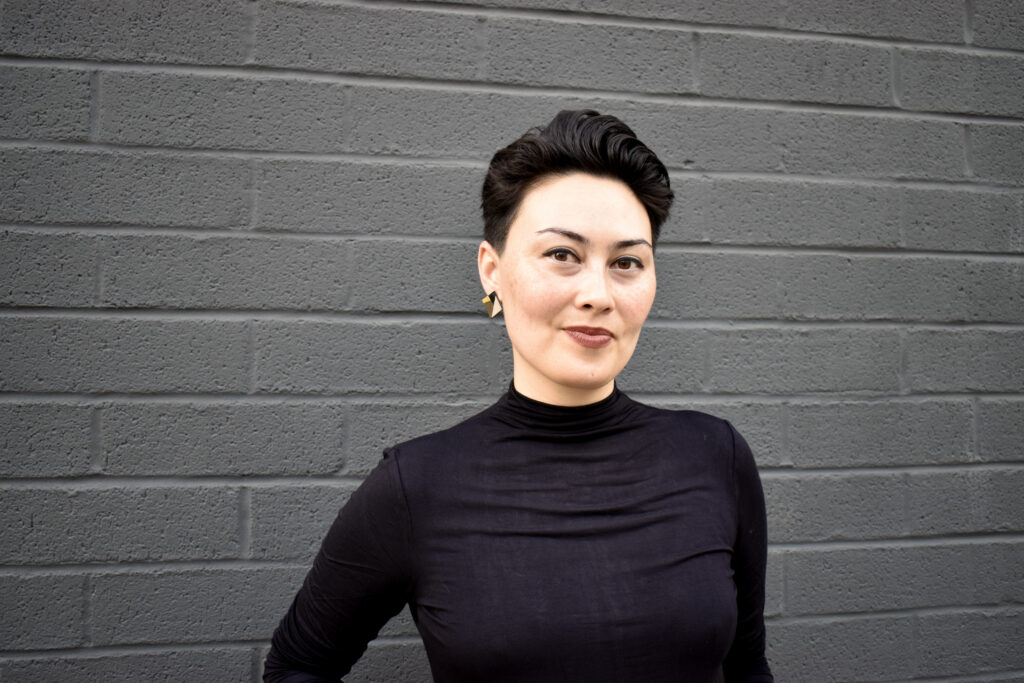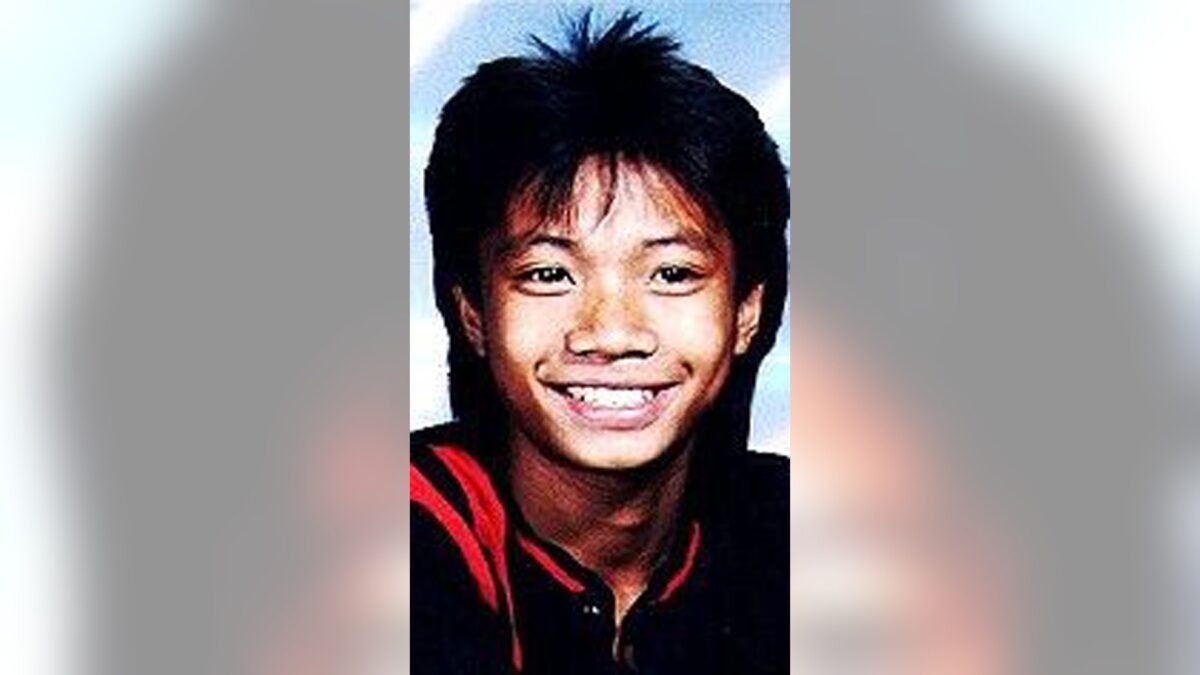By Guest Contributor: Anna M. Moncada Storti
Content Note: Explicit mention of events of child m*lest*tion, s*xual violence, anti-Asian murder & violence, anti-Black murder & violence
Spring brings renewal, so they say. A much needed reprieve after the year we’ve all endured, this season of new beginnings, however, asks us to do more than reemerge. In the United States, May is recognized as Asian American and Pacific Islander Heritage month. Our previous calendar month was also designated as Abolition May by the Cops off Campus Coalition. The call to embrace AAPI heritage and the call for abolition have more in common than one may think.
Like many scholars, I’ve devoted time this May to teaching and learning about the specific relations between anti-Asian violence, anti-Blackness, and abolition. Shifting into Pride month, the task remains. As I imagine liberation for all, I hold Konerak Sinthasomphone in my memory, and you should too.
As I imagine liberation for all, I hold Konerak Sinthasomphone in my memory, and you should too.
May 27 marked 30 years since Sinthasomphone’s premature death. He was 14 years old. A Laotian immigrant, Sinthasomphone had been living in the states since 1979 when his family left the Nonkai refugee resettlement camp in Thailand to seek out a better life in Milwaukee. On May 26th 1991, he found himself at a shopping mall where he was approached by Jeffrey Dahmer.
The “Milwaukee Monster” lured the boy to his apartment, offering money in exchange for a photoshoot in which the white man would capture nude images of the Asian boy. The man drugged Sinthasomphone and performed his MO, which is a brutality unnecessary to repeat here. Dahmer wanted nothing else but pure control, a body who would never leave his side. The next morning, Sinthasomphone did just that. He escaped, making it to the corner of a near-by street where two Black women, Sandra Smith and Nicole Childress, comforted him. The boy could barely talk or stand so the women did what many of us were taught to do in these situations: call the police. As the women waited with the boy, it was Dahmer who arrived at the scene first, minutes before the cops did. Calm and polite, the white man told the lies he needed to—that Sinthasomphone was a friend with a drinking habit, that there was nothing to see here— but the Black women were adamant, imploring the officers to take note of the boy’s state and the blood coming from his rectum. The women were threatened with arrest. Dahmer and a stumbling Sinthasomphone were escorted back to the man’s apartment deemed by the officers to have shown no signs of a struggle.
If instead the police had checked Dahmer’s ID, they would have learned that he was on probation for child molestation. The victim in that case had been one of Sinthasomphone’s older brothers. But the cops told themselves that this was merely a lover’s quarrel and that Sinthasomphone’s silence was simply a sign that he could not speak English. After having been returned to the man, the boy died less than an hour later. Dahmer, with the blood of 17 men and boys on his hands, had a racist imagination. More than half of his victims were Black and all but 3 were not white, casting Sinthasomphone in a scene of racialized and homoerotic violence that police are simply too unfit to notice, and too in service of to not be complicit in.
As we move from AAPI heritage month to Pride month and onwards, we must stay learning about the root causes of violence.
Remembering Konerak Sinthasomphone is less a case study on the negligence of police or the pervasive violence of white men, though it is that. Rather, remembering Konerak Sinthasomphone means holding the past closer, even in this moment when there is already too much to mourn. Just this spring, we grieved the lives of six Asian women murdered in Atlanta, four members of the Sikh community murdered in Indianapolis, and those killed by the police—Christian Hall, Angelo Quinto, and Iremamber Sykap—all while we fear for our own as countless attacks rage on against East Asian and Southeast Asian elders in the US and against Palestinians in the Gaza Strip, West Bank, and Israel. This recent surge in anti-Asian violence reflects a foundational racism of settler colonial violence. While the hashtag #StopAsianHate has helped garner national attention, it fails to capture the gravity of anti-Asian violence. Too, it contradicts movements of solidarity between Asian Americans and other marginalized communities, producing deadly implications for those most at risk.
On the implications, we need not look farther than two weeks ago when President Biden signed the COVID-19 Hate Crimes Act into law, promising more criminal law enforcement in a move Attorney General Merrick Garland calls an “important step toward protecting everyone in our country.” A gross misunderstanding, hate crimes legislation is neither equipped to address the roots of racism, nor does it offer safety and protection.
The only way forward is abolition. Roaring across the world, calls to defund and abolish the police reached new heights after George Floyd was murdered last May 25th. The anniversary of Floyd’s death brings added resonance to this moment where we see a number of US cities increasing the budgets for police departments, restoring the cuts experienced after last year’s protests. Hiring more cops threatens the safety of those most vulnerable without offering any reduction in harm. As we move from AAPI heritage month to Pride month and onwards, we must stay learning about the root causes of violence. “Abolition is about presence, not absence” imparts prison abolitionist and professor Ruth Wilson Gilmore. “It’s about building life-affirming institutions.” Part of the learning is embracing how the building has already begun.
Calling the cops did not save Sinthasomphone. Instead, safety and protection become possible when our communities enact any of the myriad alternatives to policing—transformative justice, safe housing, mutual aid, and calling on each other.

Anna M. Moncada Storti writes and teaches about race, feminist and queer theory, and Asian American contemporary art and culture. Currently the Guarini Dean’s Postdoctoral Fellow in Asian American Studies at Dartmouth College, she has published and forthcoming work in Women & Performance: a journal of feminist theory, Frontiers: A Journal of Women Studies, Feminist Studies, and elsewhere. In Fall 2021, she will begin as Assistant Professor of Gender, Sexuality, and Feminist Studies at Duke University.
Learn more about Reappropriate’s guest writing program and submit your work here.

